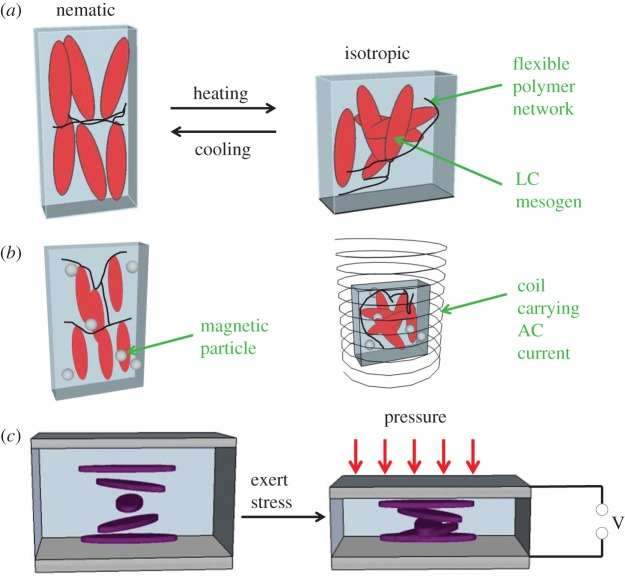Figure 8.
Schematic diagrams to show LCE actuating and sensing behaviour, where (a) shows how the ordered ‘nematic’ phase becomes isotropic during thermal-induced actuation, with a corresponding contraction along the LC director; and (b) when small magnetic particles are added to the LCE, liquid crystalline order is preserved (particles not drawn to scale). When this material is placed in a rapidly changing electromagnetic field (e.g. inside a solenoid carrying an AC current) the magnetic particles' temperature is raised, causing the same type of contraction as in (a). (c) A ‘cholesteric’ LCE, with a helical variation in the direction of the LC mesogens, changes pitch when force is exerted in the direction of the helicoidal structure; this can lead to the generation of an electric field and is potentially useful in strain sensing [172]. The mechanism by which this field is generated is discussed more fully in [173].

